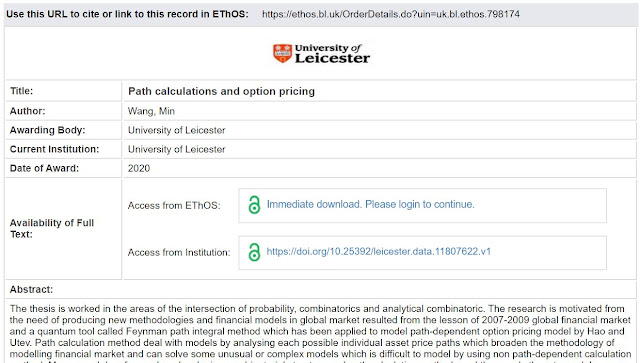EThOs - e-theses online service
A free database provided by the British Library which searches over 500,000 UK Doctoral Theses, including those from the University of Leicester.
Conduct your search. Search results with a green open padlock symbol mean that the full text of the thesis is available for free download.
Click on the result you are interested in. You should then see more details about the thesis, including an abstract. You might be given more than one option for downloading the full text PDF of the thesis - either from EThOS or from the Institution that awarded the PhD.
In order to download from EThOS you need to create a free EThOS account.
Not all theses included in EThOS are available as full text PDFs. Some will have restricted access and some may not have been digitised.
Those with restricted access will have a brown dotted padlock symbol next to them and those that have not been digitised will have no padlock symbol.
Click on a result for more details. You will currently be advised to contact the library of Institution which awarded the doctorate for those theses that are restricted or not available.
Normally there would be a an option to request a digitisation of results without a PDF (that are not restricted), however due to the current pandemic the digitisation on demand service has temporarily been suspended.




